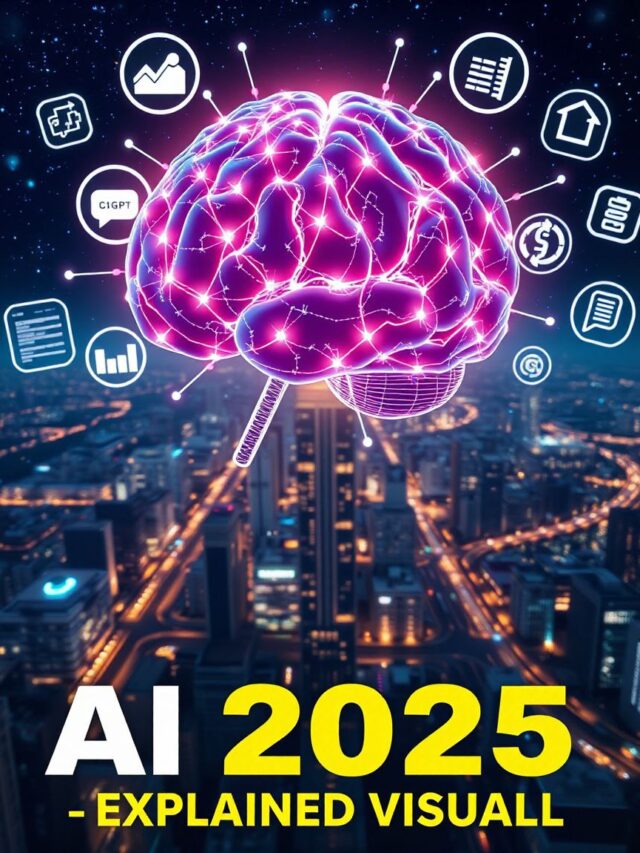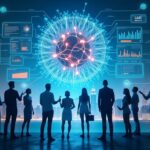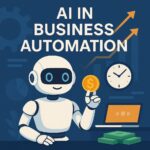Generative AI Explained: What It Is, How It Works & Why It Matters in 2025
Let’s imagine… you wanted to write a poem for your friend’s birthday, but couldn’t find the words. You opened an online tool, entered a few keywords – “friendship, happiness, childhood memories” – and in a flash, you had a poem that not only matched your feelings, but had the word magic you were unable to weave on your own. Or perhaps, you wanted a new interior design idea for your home, and an app showed you thousands of stunning, unique designs, along with a 3D visualization of your room.
This is not magic, but the power of an amazing technology we call “generative AI”. It is the power that gives computers the ability to create completely new, original, and often amazingly creative content, rather than just react to information. In 2025, this technology is not just confined to the laboratories of experts, but is seeping deeper into our everyday lives, forever changing the way we think, work, and be creative.
What is Generative AI? Meet the digital artist, musician, and writer.
If I tell you that you are going to meet an artist who has never picked up a brush, yet creates amazing paintings; a musician who has never played an instrument, yet composes heart-touching melodies; or a writer who has never read a book, yet writes heart-touching stories – you might be shocked. Generative AI is exactly that. It is the artificial intelligence that creates “new” content. Normal AI (which we often call “discriminative AI”) works by understanding and classifying a given piece of information – like recognizing a cat in an image or filtering spam emails. It simply answers “what is” or “what is not”.
But generative AI goes a step further. It “generates” something that did not exist before, based on learned patterns and data. Think of it as a chef given a database of millions of cookbooks and thousands of successful recipes. This chef not only learns to read and recognize recipes, but learns from the flavors, balance of ingredients, and cooking methods of those recipes to create a completely new, delicious dish that never existed in a cookbook before. This is the power of generative AI – it can create language, images, music, code, and even video, all based on just a few prompts. In 2025, we are seeing how quickly this technology is maturing and how vast its possibilities are.

The Evolution of Generative AI: From Rule-Based Systems to GPTs.
The story of generative AI is not just of today, but is the result of decades of scientific research and technological development. In the beginning, computers only followed rules that were explicitly programmed by humans. This was called “Rule-Based Systems“. For example, a chess computer that only moved according to a set of pre-determined moves. These systems were not flexible and could not create anything new.
Then came the era of “machine learning“, where computers were designed to learn from data on their own. During this time the concept of “neural networks” was born, which were inspired by the structure of the human brain. These networks consist of interconnected “nodes” or “neurons” that learn to recognize patterns in data. Early neural networks were good at classifying data, but not at creating anything new.
The real revolution came when “deep learning” took hold, which used neural networks with many layers. In 2014, “Generative Adversarial Networks” (GANs) were introduced, which trained two neural networks against each other – a “generator” that created new data, and a “discriminator” that recognized whether the data was real or generated. It was like an artistic competition, where the generator kept improving its performance so that the discriminator would recognize it as real. This led to incredibly realistic looking images and videos.
But the biggest leap forward in language came with the “Transformers” architecture, which in 2017 paved the way for models like “GPT” (Generative Pre-trained Transformer). GPTs are “pre-trained” on trillions of text data from across the internet, giving them a deep understanding of the patterns, context, and nuances of language. By 2025, GPTs are working not just with text but other data types as well, taking the potential of generative AI to unimaginable levels. It is a development that has transformed computers from mere calculating devices to creative companions.
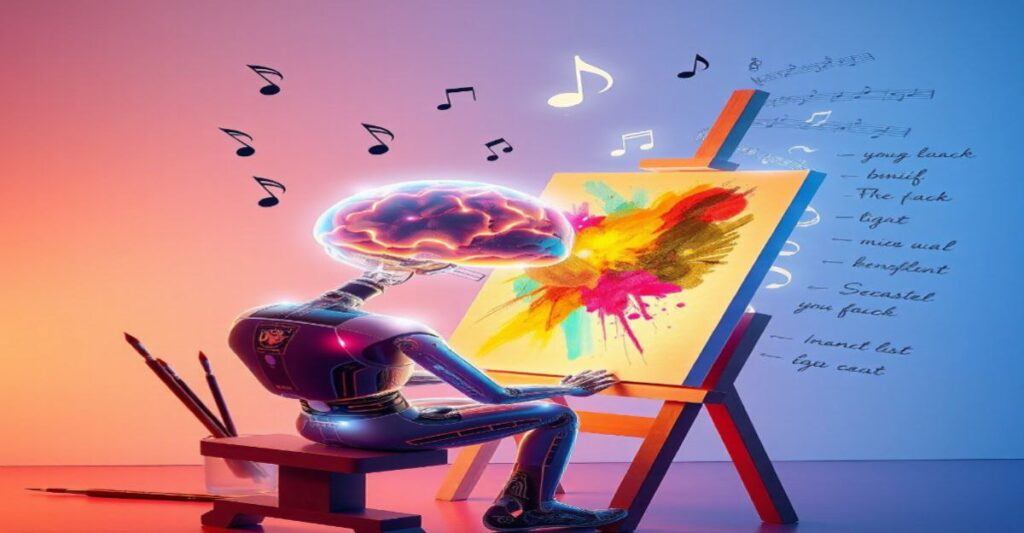
How it works technically: neural networks, training data, tokens and weights.
Understanding the workings of generative AI is not rocket science, it just requires knowing some basic principles. Its foundation is the “neural network” – a mathematical model inspired by the structure of the human brain. It consists of millions of “neurons” (or nodes) that are interconnected. These connections are controlled by numbers called “weights”, which determine how strongly information will flow from one neuron to another.
These networks are trained on “training data”. This data is huge – billions of text documents, millions of images, hours of audio. Think of it like you are training a young chef. You don’t just give him one or two cookbooks, but millions of cookbooks from around the world, videos of recipes, information about ingredients, and the experience of working in the kitchens of experienced chefs. A chef doesn’t memorize ‘this is a rice recipe’ or ‘this is a dal fry recipe’, but learns patterns between dishes – like how to balance sweet and sour tastes, or what ingredients taste good together.
Generative AI learns in a similar way. When we give it text data, it doesn’t memorize the words directly, but breaks them down into smaller parts called “tokens”. These tokens can be a word, a letter, or part of a word. The AI then learns how often these tokens appear next to each other and in what order. For example, in the sentence “Hello, how are you?” the AI learns that “hello” is often followed by “aap”, and then “how are you”. The relationship between each token is represented by “weights”. These weights number in the billions and represent the “knowledge” of the AI.
When you give a generative AI a prompt, it uses its learned patterns and billions of weights to predict the next possible token. It generates one word, then another, then a third, and so on, building up entire sentences or paragraphs. All of this happens so quickly because it already has all the knowledge (weights) and patterns (learned from training data). By 2025, the complexity of these neural networks and the vastness of the training data make them incredibly creative.
Want to understand how Generative AI actually works — in simple visuals and examples? Watch the full explainer video below!
Where is data stored? Cloud data centers and the vast empire of patterns.
You may wonder, if generative AI knows and creates so much, where is all its “knowledge” stored? Is it a giant digital library that stores every book, every picture, and every song? No, it is not. Generative AI does not memorize data word-by-word or image-by-image. It stores data in the form of its patterns.
Let’s understand this with an analogy: when you learn a language, you don’t memorize every sentence, but you learn the grammar of that language, the meaning of words, and the rules and patterns for forming sentences. Generative AI does the same. It processes billions and trillions of gigabytes of data and learns the complex mathematical patterns and relationships hidden in that data. This learned pattern and knowledge, in the form of billions of “weights,” is stored in giant “cloud data centers.”
These cloud data centers are giant buildings that are spread around the world, especially in countries where electricity is cheap and internet connectivity is fast. These centers contain thousands of server racks, which contain millions of specialized computer chips (such as GPUs and TPUs). These chips are the “brains” that store the weights and perform the calculations of AI models.
Storing patterns rather than directly storing data means that when you ask a generative AI something, it does not copy-paste from its “memory” but rather “creates” something new based on the patterns it has learned. This is similar to a musician listening to thousands of songs and then composing a brand new song based on the melodies and harmonies it has learned from those songs. In 2025, these global data centers have become the backbone of generative AI, giving us unlimited creativity.
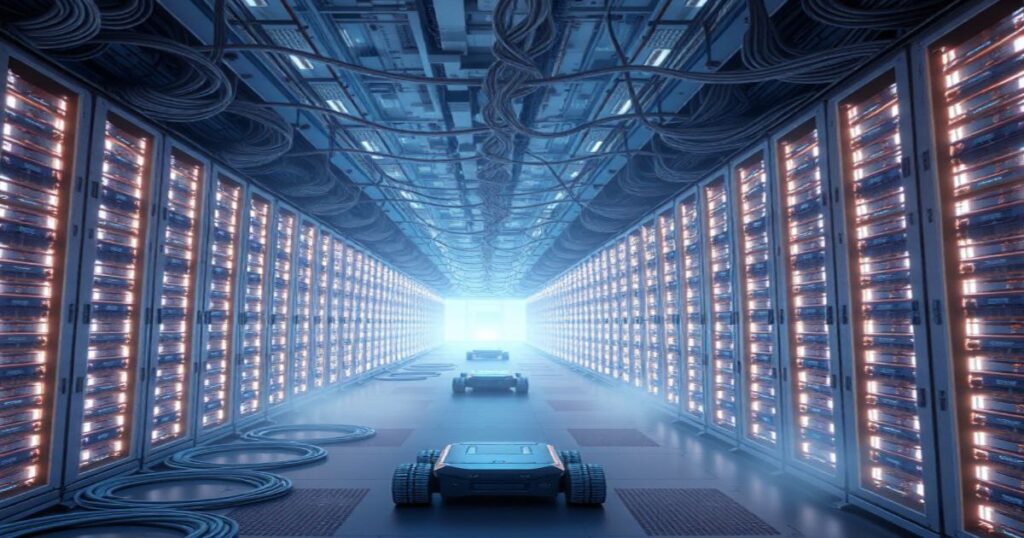
Hardware and Devices: The Amazing Dance of GPUs, TPUs, Energy, and Liquid Cooling.
Not only software and algorithms are enough to run generative AI, but a huge and powerful hardware infrastructure works behind it. It can be called the “body of AI“. The most important roles in this are played by “graphics processing units” (GPUs) and “tensor processing units” (TPUs).
The central processing units (CPUs) of traditional computers are great for general calculations, but GPUs and TPUs are specially designed for parallel computations. To train an AI model, millions of mathematical operations have to be done simultaneously – just like an artist has to consider the colors and strokes of his entire painting at once. GPUs and TPUs can do this parallel processing very quickly, which takes less time for the AI model to learn from huge datasets.
These chips require a huge amount of energy to run. The amount of electricity required to train a large AI model can be equal to a small city. And where so much electricity is used, so much heat is also generated. Imagine thousands of computers working all day and night at the same time – they will release so much heat that the temperature of the room will rise a lot. Advanced technologies like “liquid cooling” become necessary to control this heat.
In many AI data centers, servers are immersed directly in large tanks filled with special non-conductive fluids. This liquid absorbs heat directly from the chips and vents it away, allowing the servers to work at maximum efficiency and not overheat. It is a quiet and incredibly effective way to keep these powerful machines cool. In 2025, without this cutting-edge hardware and energy-efficient cooling systems, we would not be able to take advantage of the unimaginable capabilities of generative AI. It is a huge, invisible engine that powers the most innovative ideas in the digital world.
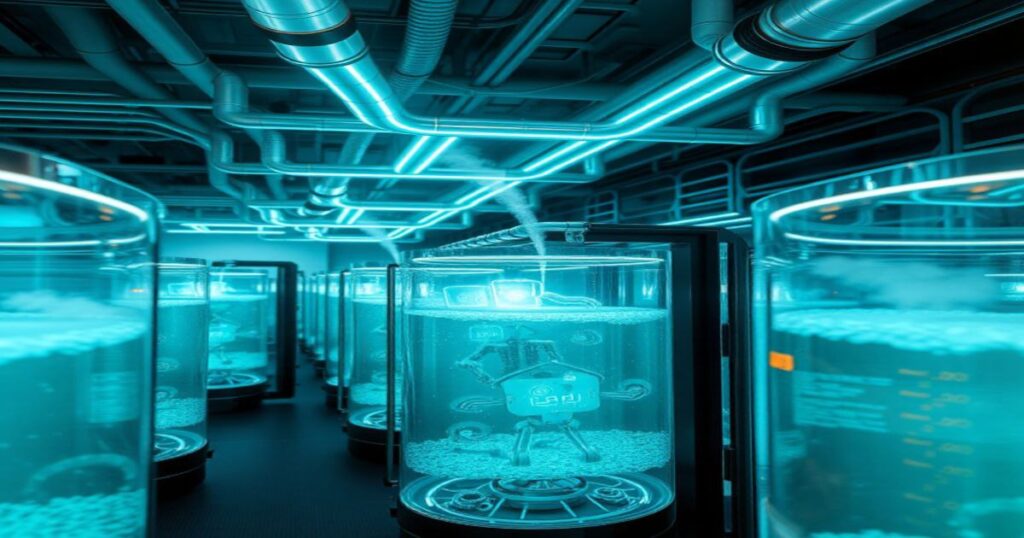
Why does it respond so fast? The magic of training and inference.
Now that we understand how generative AI works and where it stores data, one question remains: how come when you ask ChatGPT or Gemini something, it responds in the blink of an eye? Does it go through its entire ‘training‘ process every time? No, it doesn’t. The secret to its speed lies in the difference between “training” and “inference“.
Imagine you have learned to ride a bicycle. When you first learn, it takes a lot of time, effort, and the experience of falling many times. You practice again and again, balance, learn to pedal. This is the “training” phase. It takes a lot of energy and calculations. The same happens with a generative AI model – it can take months or years to train it on billions of data points, which requires huge computing power.
Once you learn to ride a bicycle, you don’t have to relearn it every time you ride it. You just sit on it and go. This is the “inference” stage. This is the stage where you respond quickly using your learned skills. Generative AI also works in a similar way. Once the model has been trained on billions of text or image data and its “weights” (learned knowledge) have stabilized, it does not need to be trained on the entire dataset again.
When you ask it a question (called a “prompt”), the model uses its previously trained knowledge (weights). It understands the prompt, runs through its internal patterns, and predicts the most likely response. This process happens so fast because it is only using a ‘learned’ model, not building it from scratch. This is similar to how a sharp mathematician can solve a problem instantly because it has already learned all the formulas and methods. By 2025, the speed of inference has increased so much that it is possible to interact with generative AI in near real-time, making it a seamless part of our daily lives.
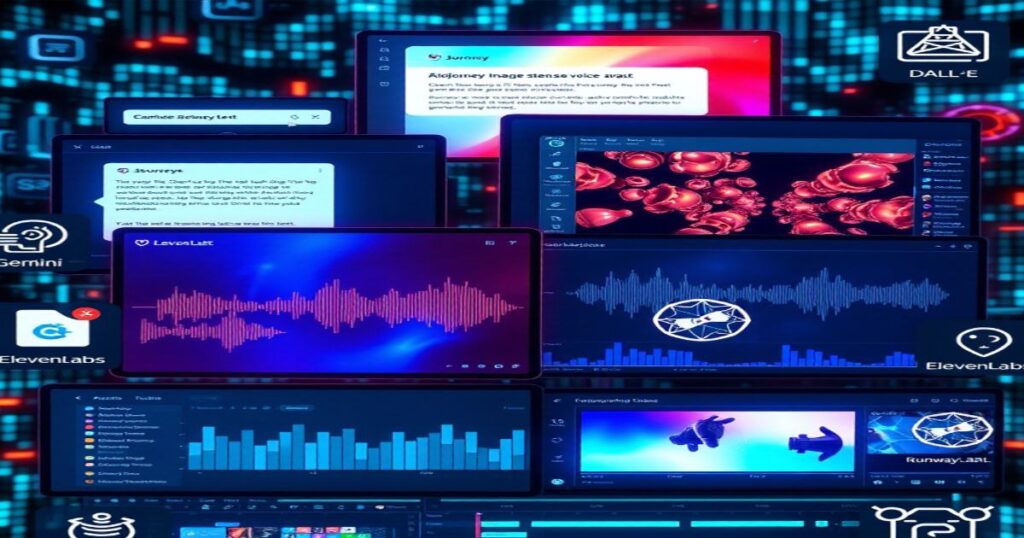
Popular AI tools of 2025: The new world of creativity
In 2025, Generative AI is no longer just a subject of research labs but is at our fingertips through dozens of user-friendly tools available on our smartphones, computers, and online platforms. It has given every individual the power to become a digital creator. Let’s take a look at some of the most popular and influential Generative AI tools:
Text Generation: The frontrunners are ChatGPT (by OpenAI) and Gemini (by Google). These tools can not only write emails, essays, and marketing copy, but also craft poems, scripts, and creative stories. You can ask them to write code, brainstorm ideas, or explain a complex topic in simple terms. They can automate or assist with almost any written task.
Image Generation: Tools like Midjourney, DALL·E 3 (by OpenAI), and Leonardo AI can create stunningly realistic or artistic images from text prompts. You can type in images like “an astronaut on a horse to the moon” or “a magical waterfall in a forest,” and AI will give them visual form. These have proven to be game-changers for artists, designers, and marketing professionals.
Audio Generation: Tools like ElevenLabs and Descript can turn text into extremely natural-sounding voices (text-to-speech). They can create audio content in a variety of languages and accents, great for podcasts, audiobooks, and voiceovers. Some AIs can even generate music, such as Amper Music or AIVA, which compose tunes based on mood or genre.
Video Generation: Platforms like RunwayML and Synthesys.io can create short video clips from text prompts, or even entire videos with AI-generated presenters. These tools are making video production cheaper and faster for advertisers, content creators, and filmmakers. You provide a script, and AI creates the video by adding visuals, sound, and animation.
Code Generation: GitHub Copilot acts like an AI-powered pair programmer for programmers. It suggests code, completes blocks of code, and can even write entire functionality from natural language prompts. It is making software development faster and more efficient.
In 2025, using these tools, anyone, even if they don’t have special skills, can become a graphic designer, content writer, or video editor. Generative AI has opened the doors of creativity to everyone.
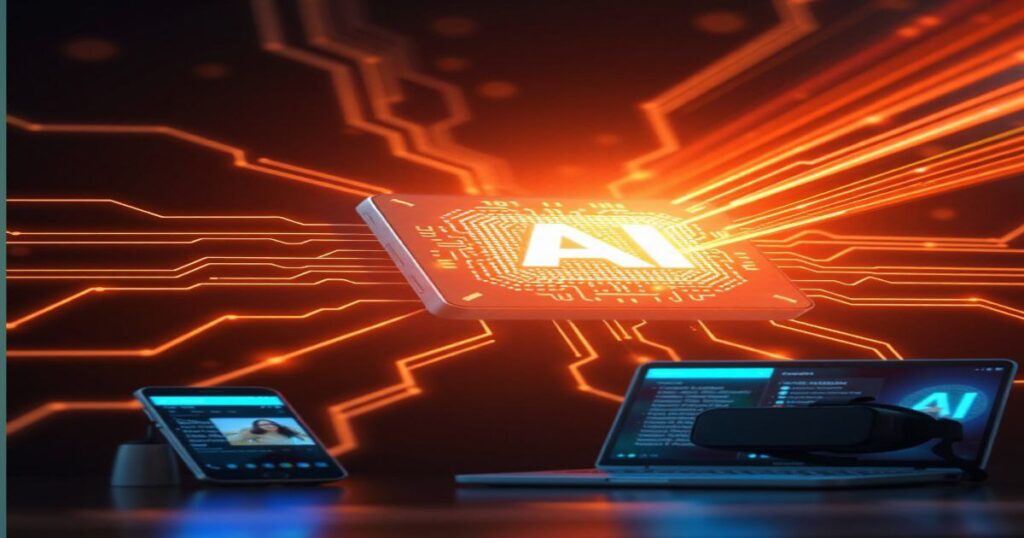
Real-world use: How AI is changing our lives.
Generative AI is no longer just a technical buzzword; it is being woven deeply into the fabric of our everyday lives, and there is no limit to its applications in 2025. Let’s take a look at some of the scenarios where generative AI is adding real value:
Education and learning: Imagine a student who is having difficulty understanding a complex subject, such as quantum physics. He uses a generative AI tool that explains the subject to him in simple terms, gives examples, creates interactive quizzes, and even creates a personalized learning path for him. AI is personalizing textbooks, helping students learn at their own pace, and freeing teachers from administrative tasks so they can pay more attention to students.
Healthcare: For doctors, generative AI has become a powerful assistant. It can help with potential diagnoses, design new drug molecules, and suggest treatment plans by analyzing millions of medical journals, research papers, and patient data. It helps medical professionals perform simulations in complex cases and customize patient-specific treatments. AI is also accelerating the discovery of new drugs by generating new protein structures, which will make it easier to treat diseases in the future.
Entertainment and Media: Generative AI is proving to be a boon for YouTubers, podcasters, and content creators. A YouTuber can use AI to write video scripts, generate voiceovers, create images or short clips that resemble stock footage, and even compose background music for their videos. It is democratizing content creation, making it possible for individuals to create professional-quality content without a large budget. Even in Hollywood, AI is helping to create initial drafts for scripts, improve character dialogues, and create special effects.
Business and Marketing: Generative AI is revolutionizing marketing, customer service, and product development for businesses. It can write targeted ad copy, create social media posts, design email campaigns, and make customer chatbots more natural and helpful. A clothing brand can generate new design patterns using AI, or a real estate company can create virtual home tours for customers. It is helping businesses connect with customers better and meet their needs faster.
Software Development: Programmers can generate snippets of code, debug bugs, and write entirely new software modules using AI. This speeds up the development process and allows programmers to focus on more complex and creative tasks.

Why this matters in 2025: The confluence of productivity, creativity, and automation.
In 2025, generative AI is more than just a technological innovation; it is a fundamental force that is redefining the way we work, be creative, and live. There are three main reasons why this is so important: increased productivity, an explosion of creativity, and unprecedented automation.
Unprecedented increase in productivity: Generative AI is freeing us from tasks that are repetitive and time-consuming. Do you need to respond to emails? Let AI create a draft. Do you need to extract a summary from meeting notes? AI will do it in a matter of seconds. Whether writing code, analyzing data, or preparing research reports, AI can complete these tasks dramatically faster and more efficiently. This allows individuals and organizations to focus on more value-added activities, leading to a surge in overall productivity. An employee can now do hours of work in minutes, allowing them to focus on more strategic thinking and innovation.
Explosion of creativity: Generative AI doesn’t just copy existing things; it can create entirely new and original content. It has become a powerful co-creator for artists, musicians, writers, and designers. If you are a musician looking for a new tune, AI can generate countless tunes to inspire you. If you are a writer, it can help you experiment with storylines, character ideas, or different writing styles. It gives people the power to be creative who traditionally did not have creative skills, and provides an endless source of inspiration and new ideas for professionals who are already creative. It is a creative partner that never tires, always coming up with new ideas.
Novel Automation: Traditional automation involves following rules for repetitive tasks. Generative AI can automate tasks that require creativity, understanding, and adaptation. It can make robotics more intelligent, make customer service more human, and extract new insights from complex datasets. It is expanding the scope of automation to areas that were once reserved for human capabilities only, giving businesses unprecedented opportunities to optimize operations and develop new products and services. In 2025, this powerful confluence of productivity, creativity, and automation is what makes generative AI so important to our future.
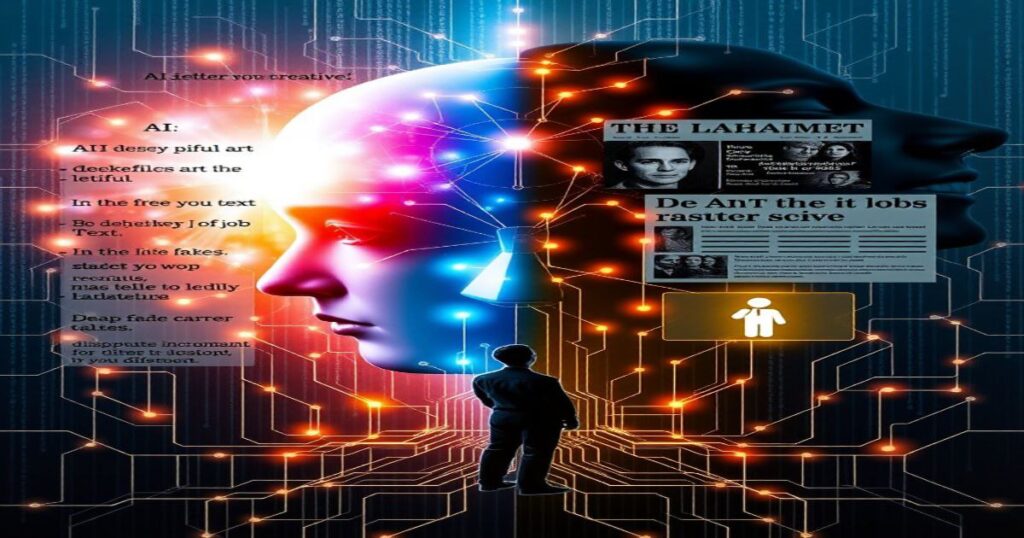
Risks and Challenges: The Shady Side of Generative AI.
The capabilities of generative AI are limitless, but like every powerful technology, it also carries with it some significant risks and challenges that we must seriously consider in 2025. Understanding these challenges and finding solutions to them is vital for our collective future.
Deepfakes and Misinformation: One of the most disturbing uses of generative AI is the creation of “deepfakes” – highly realistic but fake videos, audio and images that appear to show a person saying or doing something they never did. These can be used to spread disinformation, damage the reputation of individuals or create political instability. The spread of misinformation can be further fueled by AI, making it difficult to distinguish between truth and lies. This is a serious threat to democratic processes and public trust.
Ethics and Bias: If the data on which a generative AI model is trained contains social biases (racial bias, gender bias, etc.), the AI model will also learn those biases and replicate them in its output. For example, if an AI is trained primarily on faces of the same sex or race, it may struggle to accurately generate faces of other groups. This can exacerbate inequalities in society and lead to unjust outcomes. Establishing ethical guidelines for the use of AI and actively reducing biases in AI systems is a major challenge.
Copyright and Intellectual Property: When a generative AI creates something new by learning from existing artworks, text, or music, the question arises as to who owns the copyright to that new content? Does it belong to the AI, the person who gave the AI the prompt, or the artists whose work the AI learned from? It challenges copyright laws and traditional concepts of artistic ownership, creating legal and ethical complexities.
Impact on Employment: As generative AI automates more and more tasks, especially in creative and knowledge-based sectors, fears of job displacement are growing. While AI will also create new jobs, some existing roles may be redefined or eliminated altogether. This creates an urgent need for reskilling and upskilling for the workforce.
Cybersecurity Risks: Generative AI can also be used to make cyberattacks more sophisticated, such as the creation of highly realistic phishing emails or malicious code. AI-generated content can be used to infiltrate secure systems, creating new security threats.
Acknowledging these challenges and working to address them is critical to the safe and responsible development of generative AI. In 2025, we stand at a crossroads where it is our collective responsibility to use this powerful technology wisely.
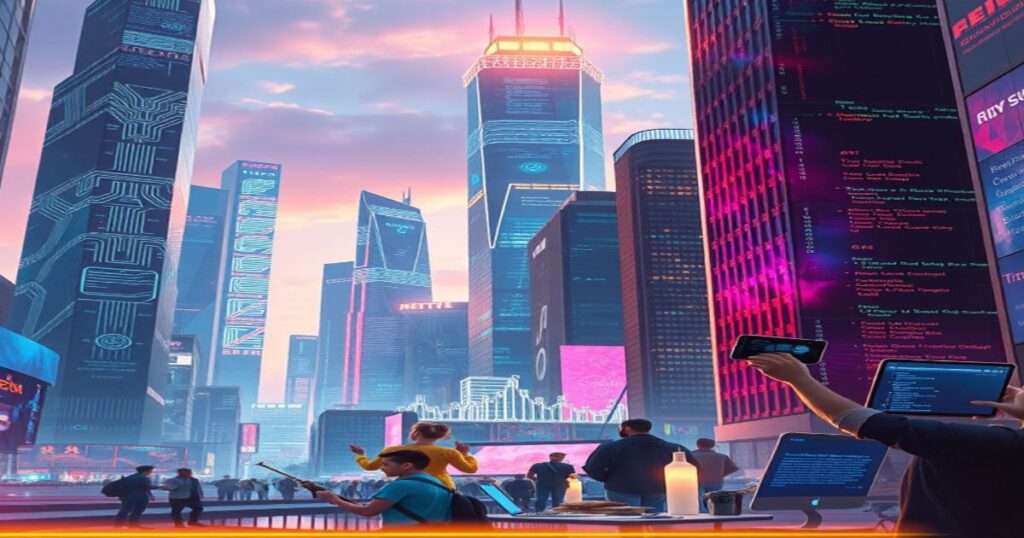
The future of generative AI: towards co-creation and emotional intelligence.
The form of Generative AI we see in 2025 is just the tip of the iceberg. Its future is full of exciting and surprising possibilities, which will define new boundaries of collaboration between human and machine. It will evolve from being just a tool, but a true co-creator and possibly an emotional companion.
Hyper-Personalized AI Companions: Future generative AI models will become highly personalized, understanding your individual preferences, learning styles, and emotional needs. Imagine an AI that wakes you up in the morning, creates music according to your mood, summarizes the most appropriate news for you, and helps you plan strategies for your professional goals. It will be a companion that will not only follow your commands, but also anticipate your underlying needs.
Pinnacle of Co-Creation: The future of generative AI will enhance human creativity rather than replace it. We will see artists, designers, musicians, and writers working together with AI, where AI is not just a tool, but an active participant. AI can transform an initial idea into thousands of variations, while the human artist will select and refine the best one. This “co-creation” will give rise to a new artistic and inventive revolution, where human intuition and the limitless productive capacity of AI work together.
Deeper Integration with the Physical World: Generative AI will not be limited to the digital world. It will also bring creativity to the physical world in conjunction with robotics and IoT (Internet of Things) devices. Imagine an AI that designs a new piece of furniture for your home, and then builds it using a 3D printer; or an AI-powered robot that creates new, optimal layouts according to the needs of the plants in your garden.
Emotional Intelligence and Human Connection: Although this is a sensitive area, researchers are working on teaching AI emotional intelligence. Future generative AI models will not only recognize human emotions but also respond accordingly, allowing them to have more empathetic and humane conversations. This could revolutionize areas such as customer service, therapy, and personal coaching. However, ethical considerations will be very important.
Model-Based World Simulations: AI will be able to create complex world models to simulate future scenarios and explore possible outcomes. This will help scientists test new theories, policymakers make better decisions, and businesses anticipate market trends.
The future of generative AI will be a wonderful dance between human innovation and the limitless capabilities of AI. It will take us beyond limits we never imagined, creating a future where creativity and productivity will reach new heights.
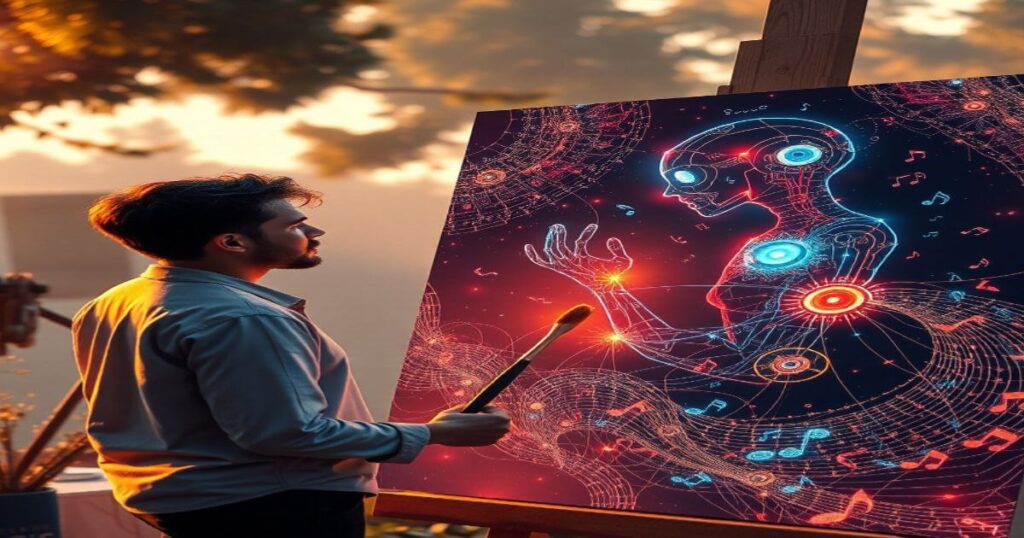
Conclusion: Towards a new dawn
We have taken an incredible journey of generative AI – from a concept that seemed like a dream earlier, to becoming an integral part of our lives in 2025. We understood what it is – a digital artist, writer, and musician that never sleeps. We saw its evolutionary journey, from rule-based systems to the complexities of deep neural networks and GPTs. We peered into the technical details of its functioning, understanding how neural networks, training data, tokens, and weights work together to make this magic possible.
We saw how in huge cloud data centers, in the form of billions of weights, this knowledge is stored as patterns, not rote information. We appreciated the crucial role of powerful hardware like GPUs and TPUs, which provide energy and speed to this whole system, as well as innovative technologies like liquid cooling that keep these powerful machines cool. We understood how the process of “inference” enables generative AI to respond so quickly, making our experience seamless and immediate.
We explored some of the most popular AI tools of 2025 – ChatGPT, Midjourney, ElevenLabs, RunwayML, and GitHub Copilot – and saw how they are revolutionizing text, image, audio, video, and code creation. We also saw how generative AI is becoming a powerful tool for students, doctors, content creators, and businesses in the real world, increasing productivity and boosting creativity.
But we didn’t spare the challenges either – we considered critical risks such as deepfakes, bias, copyright, and the potential impact on jobs. Finally, we looked to the future of generative AI, where the possibilities of personalized AI companions, deep co-creation, and emotional intelligence await us.
Generative AI isn’t just a technology; It is a transformative force that is forcing us to rethink what humans can do and what machines can do. It is like a new dawn, where the doors of digital creation are opening up. Instead of being afraid, we should educate ourselves, experiment, and move forward responsibly to be a part of this incredible journey. Let’s embrace this exciting future, where human insights and the limitless capabilities of AI will combine to create a world we have never imagined.

Frequently Asked Questions (FAQ)
Is generative AI dangerous?
Generative AI is a powerful technology, and like any powerful tool, it can be used for both good and bad. It is not dangerous in itself, but its misuse (such as spreading deepfakes or misinformation) or its bias (in the data it is trained on) can pose risks. It is important that we govern its development and use with ethical guidelines and strong safeguards.
Where does generative AI get its data?
Generative AI models are trained on vast amounts of publicly available data. This can include billions of text documents (webpages, books, articles), millions of images (photos, artworks), audio recordings, and videos on the internet. This data is not stored directly, but the AI learns the patterns, relationships, and structures in this data, and this learned knowledge is stored in its “weights.”
Can generative AI replace humans?
Generative AI can certainly automate many repetitive, creative and knowledge-based tasks, leading to changes in some jobs. However, it is unlikely to completely replace humans. Instead, it will act as a powerful tool that enhances human capabilities, helping us to be more productive and creative. Human judgment, emotional intelligence, critical thinking and problem-solving abilities will still remain unparalleled and collaboration with AI will lead to new kinds of roles.
What powers generative AI?
Generative AI requires huge computing power to run. It mainly uses specialized hardware such as graphics processing units (GPUs) and tensor processing units (TPUs). These chips can perform parallel calculations very quickly. Apart from this, it also requires massive amounts of power and advanced cooling systems (such as liquid cooling), which are installed in huge cloud data centers.
Can I use generative AI for free?
Yes, many generative AI tools are available for free in 2025, especially for basic use. Many platforms like ChatGPT, Gemini, DALL·E Mini (now Craiyon) offer a free tier or limited free usage. However, premium features, higher quality output, faster processing, or more usage usually require a paid subscription.
Disclaimer: All visuals in this article were generated using AI tools like mage.space . They are illustrative and do not represent real-world photography.
Hi, I’m Santu Kanwasi, a passionate blogger with over 2 years of experience in content writing and blogging. I create original, informative, and engaging articles on a wide range of topics including news, trending updates, and more. Writing is not just my profession—it’s my passion. I personally research and write every article to ensure authenticity and value for my readers.
Whether you’re looking for fresh perspectives or reliable updates, my blog is your go-to source!

